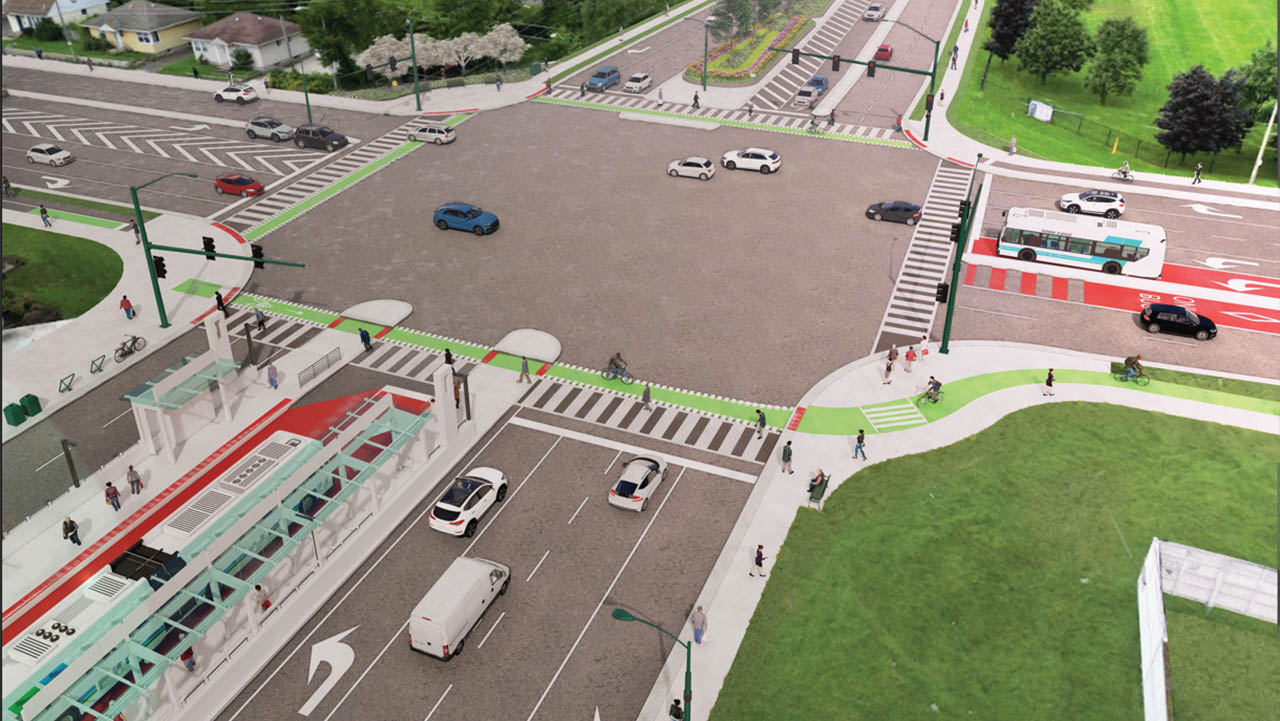East London Link construction begins, delays expected
 CREDIT: CITY OF LONDON
CREDIT: CITY OF LONDONThe East London Link will revitalize the intersection of Highbury Ave N. And Oxford St. E.
Lane restrictions have begun for construction of the East London Link Phase 3C project on Highbury Ave. N and Oxford St. E. The multi-year project will revitalize more than 6 km of road from downtown London to Fanshawe College, adding transportation and transit improvements above ground, while repairing and replacing aging sewers, watermains and other underground infrastructure.
“This phase three will be widening the road to add dedicated transit land, which will be running in the centre of the road,” said City of London Director of Construction and Infrastructure Services Jennie Dann. “This will maintain two lanes for traffic in each direction, adding turn lanes and signals to help people move through the corridor.”
Until about Dec. 2024, Highbury Ave. N and Oxford St. E will be accessible to vehicles with fewer lanes in each direction. Dann recommended that drivers plan for potential delays and utilize navigation applications like Waze and Google Maps to identify feasible alternate routes.
“Cones and construction equipment are already in place,” Dann said. “We are also upgrading the underground infrastructure to replace aging sewer water mains and upgrading them to accommodate some of the growth happening in the area.”
According to Dann, this project has many suitable housing and growth opportunities because it will make traffic more fluid and shorten distances, resulting in a more connected city.
“One of the things about a rapid transit system is that you are getting buses out of mixed traffic and into their lane,” Dann said. “From a traffic perspective, it gets those buses out and keeps things flowing.”
Wayfinding signage will be installed throughout the area to assist pedestrians in safely navigating the construction area. Dann said that at least one side of the road will always have access to the sidewalk throughout construction. She added that the dedicated lanes for the rapid transit system will help improve the frequency and reliability of the running buses.
“For the east corridor, once we have the rapid transit network up and running, there will be a bus every five minutes, so you would not even have to worry about a schedule anymore,” Dann said. “You would not have to wait long before the bus arrives.”
According to Dann, specific sheltered bus stops for rapid transit will be in the centre-running lanes. They will be located everywhere where there is an intersection or where there is a signalized intersection.
“What that means is you can press the pedestrian crossing button like you would if you are crossing any intersection, and then you will stop when you get to the centre platform, Dann said. “So instead of waiting on the curbside of the road, you’re just waiting at a platform in the centre.”
Dann said London is among the cities with the highest transit ridership without a higher-order transit system. She added that this must be done for a growing city like London.
According to Dann, they have already done a full environmental assessment for the east corridor from downtown to Fanshawe College, the south corridor from downtown south along Wellington to White Oaks Mall, and the downtown loop that will help support not only rapid transit but the existing conventional transit service in the downtown.
“I expect the system will grow from here because this is just the starting point for transit development,” Dann said.

















